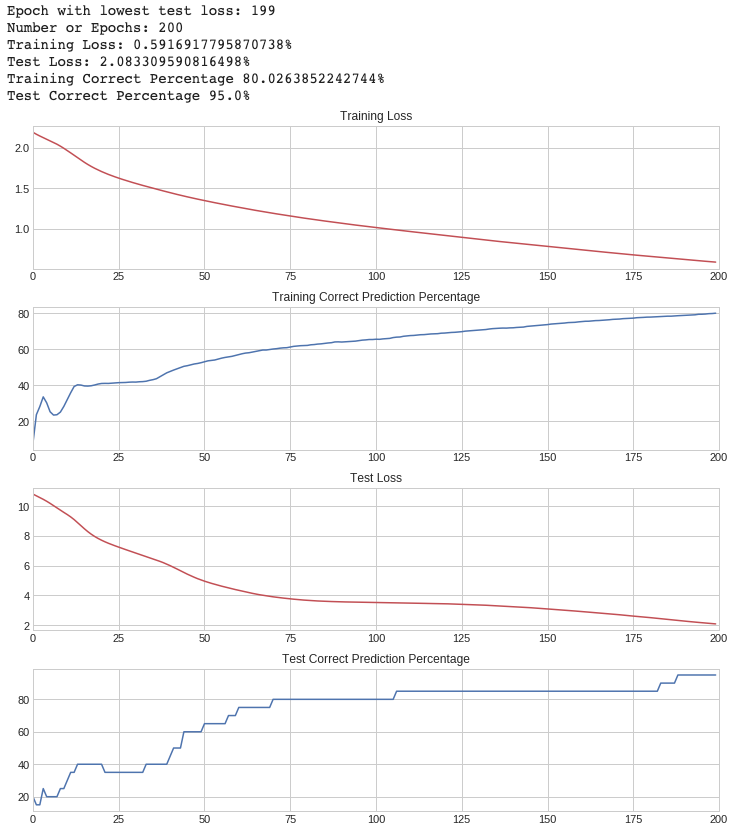- Justin Snider
- js10853
- N17359442
- y_train_new.csv
- X_train_new.csv
- y_test_new.csv
- X_test_new.csv
- AI_Project_01.ipynb
- Epochs: 200
- If we increase the number the model is over trained. The predictions become very bad for any new data.
- If we decrease the number the model does not reach the high point of 95% correct predictions.
- Learning Rate: 0.012
- The learning rate is very important. With a value of 0.012 we are able to get 95% correct predictions. However, anything larger or smaller will peak at a lower correct prediction rate.
- Using typical values and a neural network with less layers and less nodes we originally had a prediction rate of about 80%. We are able to increase this prediction rate to 95% by optimizing the settings.
- Using the orginal data with no abstracted stats gave a prediction rate of around 50% correct.
- Using instead the stats we abstracted from the raw sequence data boosted our test prediction rate from around 50% up to around 80%.
- There are distinct distributions visible when comparing our stats between materials for all of our attributes.
- However, the large number of attributes suggests we need to use a method with gradient descent, rather than a closed form normal equation.
- The complex overlap between values in the set suggests we will need a realatively complex model rather than a simple one. A nerual network would be a good direction to go.
- We use softmax to output our final estimated probability helping us to decide our classification.
- We use the Negative Log Likelihood Loss function
- Use the linear type layer since we have distinct statistics that do not have time based relationships to scan for.
- We use the rectified linear activation function.
- Much of the neural network is standard based on our number of inputs, type of data, and 9 class mutually exclusive classification output.
- We made a few changes that improved the prediction rate.
- We increased the number of hidden layers from 1 to 2.
- Adding 3 or 4 middle layers resulted in overfitting the model so we went back to 2.
- We increased the number of nodes on the hidden layers.
- Increasing the nodes to the maximum number possible resulted in overfitting so we went back to the current settings.
- Together with improving the settings (such as learning rate and epoch count) the updated neural network improved prediction rates on the test set from 80% to 95%.
